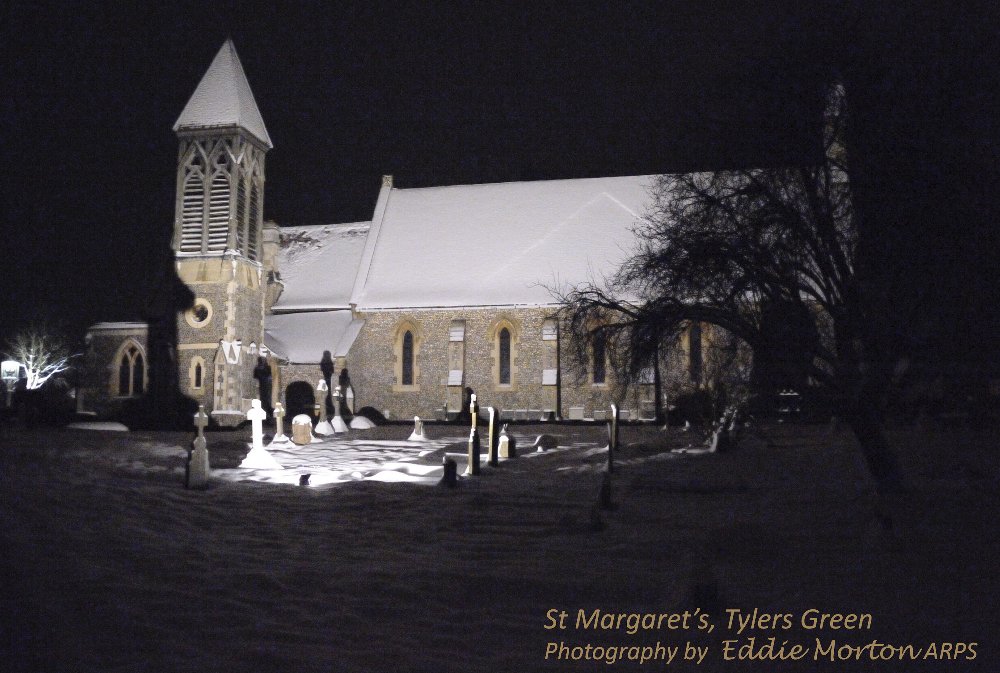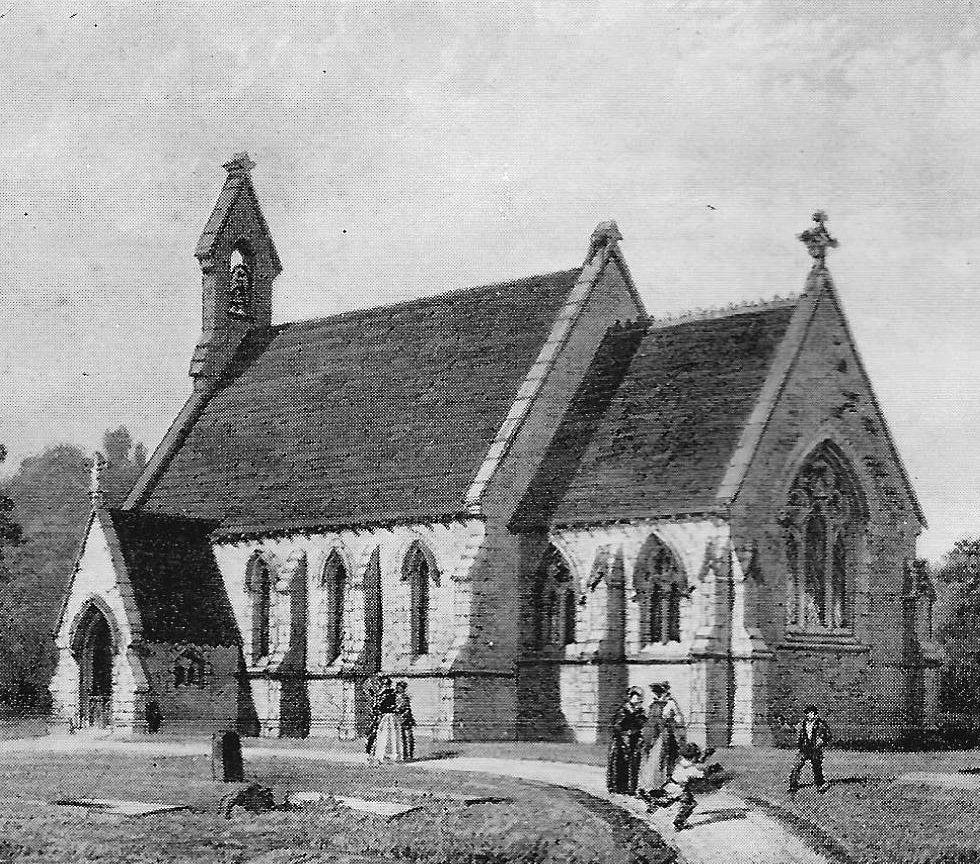When Philip Rose first arrived in Penn in 1845 he was a very successful 29 year old solicitor who had already made a name for himself by inspiring the building of the Brompton Hospital for consumption and involving the Queen herself in the venture. He was already a close aide of Benjamin Disraeli. Both he and his wife were deeply religious and it was not long before he started to think about building a church for Tylers Green.
He first had to demonstrate the need for a church and so started by carrying out a local census around the common and found 496 on the Wycombe side and 226 on the Penn side, 722 souls in total, growing rapidly every year as a result of illegal enclosures on what was ‘within living memory an open common’. He had to convince both Earl Howe and the Dean and Canons of Windsor, who owned the common, of the need for a church to combat the existing ‘social degradation and spiritual destitution’. Philip Rose was persuasive and Earl Howe, who had recently funded the grand new church at Penn Street, gave his entire approval. Rose then set up a Committee of all the Patrons and Incumbents of the parishes involved, Penn, Hazlemere, High Wycombe and Penn Street, because assigning people to a new parish meant extracting them from an existing one, seldom a popular measure. The Vicar of Penn was vehemently opposed to it having already lost parishioners to a new church at Penn Street.
Rose found a suitable site which was given by Earl Howe with a small addition from Rose himself. The cost of the whole venture was estimated to be £4,000, made up by: the Church – £1,200; Parsonage House – £1,200; Schools and endowment to provide income for the parson – £1,600. Rose was full of enthusiasm and confidence – ‘I will strain every nerve to collect what is needful…I have many friends who have promised to assist….some of them are large givers.’ However, the response was very disappointing and shortage of funds bedevilled the enterprise from the start.
In December 1852, Rose appointed a promising young architect, David Brandon, who went on to a distinguished career. He was to design a church in the Decorated style of the early 14th century, ‘ornamental rather than plain in character’ and supervise every detail of its building. Meanwhile, Rose appointed a temporary curate to hold divine services in the schoolroom which he had set up in Tyler Cottage adjoining the church site.
The first contract for building a church, ‘for 150 adults and 50 children’, was placed with W.M. Peniston who was the contractor for the new branch line railway from Maidenhead to Wycombe then being built at Rose’s initiative. Peniston requested the unusual provision that ‘materials may be used that had previously been used on the railway’. His contract in July 1853 was for £1,350 to be completed by 1 August 1854. Zachariah Wheeler, a local builder, whose descendants still live locally, was the main one of seven sub-contractors. His task was to lay the foundations and build walls over two feet thick, ‘with work fully equal to that of Penn Street, with coal ash mortar for pointing the flints’. He used sand from Tylers Green Common, chalk flints from Common Wood and black flints from Penn Street. The laying of the foundation stone was duly celebrated on 8 October 1853 with a procession from Rayners headed by the Archdeacon, Lord Curzon and Philip Rose.
So far so good, but from here on problems proliferated. Peniston was declared bankrupt, the walls then about seven feet high had to be covered over for the winter and a new contract had to be negotiated. The temporary curate who had caused ‘so much trouble’ was dismissed. There was long argument in the Committee as to who should be Patron of the new church – Earl Howe was the final choice. The tenants of a cottage where the church was to be built unsurprisingly objected to losing their home, legal conveyance of the land required signatures of people impossible to get hold of, and there was chaos over the date for the consecration. 300 invitations for 20 October were sent out but crossed with a letter from the Bishop, anxious to be helpful, saying he had fixed it for the 19th. In the event it was held on 20 October and the new church was named after Rose’s wife, but without Earl Howe, Lord Curzon, Disraeli or most of Rose’s many friends. Nonetheless, after the ceremony nearly 80 repaired to Rayners for lunch.
At this juncture, Rose fell seriously ill with ‘a rheumatic affection’ which was to plague him at intervals for much of his life and he was effectively out of action for two months. Long delays followed in settling all the bills and it was nine months before Peniston received his final payment with the Court of Bankruptcy threatening to summon Philip Rose to explain the long delay. Zachariah Wheeler was declared bankrupt. Even the new organ failed on the second Sunday ‘giving forth such extraordinary sounds’.
The final bill, originally forecast as £1,200, came to £2,000 and Rose had to pay half of it as well as provide a rent-free cottage and half the stipend for the new Vicar and meet all the legal costs. He later claimed to have met three fourths of the total cost. It took him another five years before the death of the Vicar of Penn allowed him to establish the legal boundaries of what we now know as Tylers Green. He had to contribute his own Tyler Cottage to add to the five given by Earl Howe to provide enough glebe property to give the Vicar a sufficient income and to build a new Parsonage House
Rose’s achievement was very considerable and it was the fortunate union of his formidable energy and drive, even to the extent of making himself ill in the process, with an usually generous and supportive Patron in the first Earl Howe, that overcame very considerable obstacles to create the church of which we can all feel very proud.

Miles Green, Parish Newsletter October 2024
based on Miles Green’s book July 1984:
“The History of St Margaret’s, the Story of it’s Building and the Creation of the Parish“

